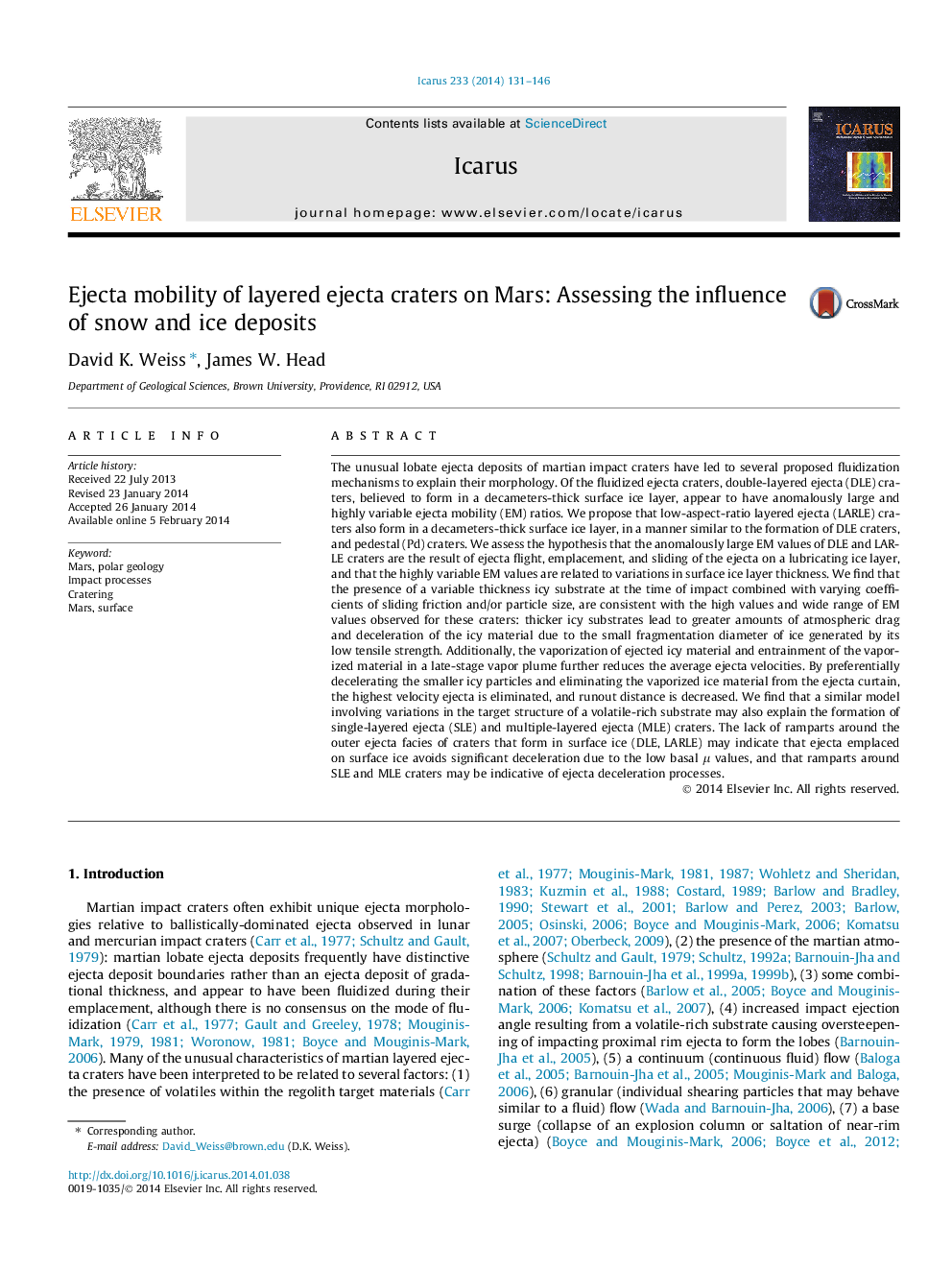| Article ID | Journal | Published Year | Pages | File Type |
|---|---|---|---|---|
| 8138313 | Icarus | 2014 | 16 Pages |
Abstract
The unusual lobate ejecta deposits of martian impact craters have led to several proposed fluidization mechanisms to explain their morphology. Of the fluidized ejecta craters, double-layered ejecta (DLE) craters, believed to form in a decameters-thick surface ice layer, appear to have anomalously large and highly variable ejecta mobility (EM) ratios. We propose that low-aspect-ratio layered ejecta (LARLE) craters also form in a decameters-thick surface ice layer, in a manner similar to the formation of DLE craters, and pedestal (Pd) craters. We assess the hypothesis that the anomalously large EM values of DLE and LARLE craters are the result of ejecta flight, emplacement, and sliding of the ejecta on a lubricating ice layer, and that the highly variable EM values are related to variations in surface ice layer thickness. We find that the presence of a variable thickness icy substrate at the time of impact combined with varying coefficients of sliding friction and/or particle size, are consistent with the high values and wide range of EM values observed for these craters: thicker icy substrates lead to greater amounts of atmospheric drag and deceleration of the icy material due to the small fragmentation diameter of ice generated by its low tensile strength. Additionally, the vaporization of ejected icy material and entrainment of the vaporized material in a late-stage vapor plume further reduces the average ejecta velocities. By preferentially decelerating the smaller icy particles and eliminating the vaporized ice material from the ejecta curtain, the highest velocity ejecta is eliminated, and runout distance is decreased. We find that a similar model involving variations in the target structure of a volatile-rich substrate may also explain the formation of single-layered ejecta (SLE) and multiple-layered ejecta (MLE) craters. The lack of ramparts around the outer ejecta facies of craters that form in surface ice (DLE, LARLE) may indicate that ejecta emplaced on surface ice avoids significant deceleration due to the low basal μ values, and that ramparts around SLE and MLE craters may be indicative of ejecta deceleration processes.
Related Topics
Physical Sciences and Engineering
Earth and Planetary Sciences
Space and Planetary Science
Authors
David K. Weiss, James W. Head,
